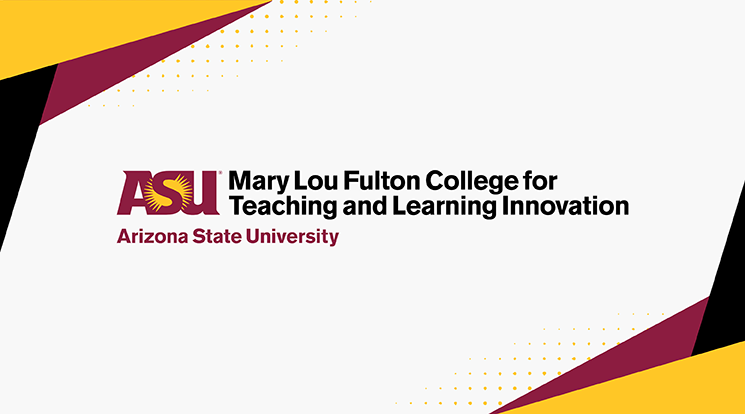Kids want to use science to change their world

Eileen Merritt knows how to get kids excited about science: Show them a problem — say, a threat to the environment — and give them the tools they need to help address it.
“Children today are aware of many environmental problems in their communities,” says Merritt, assistant professor in elementary sustainability education at ASU’s Mary Lou Fulton Teachers College. “They can make connections between the concepts they learn in class and the world around them, and they would like to help work toward solutions. But they have few opportunities at school to learn the skills and knowledge they need to solve real-world problems.”
Service-learning is deep learning
Merritt is part of the team behind “Improving Teacher Capacity to Implement High Quality Service-Learning in Elementary Science Classrooms,” a research project currently running in a large urban U.S. school district. (Institutional Review Board guidelines require the identity of the district to be kept confidential.) Other team members are Sara Rimm-Kaufman at the University of Virginia’s Curry School of Education and Tracy Harkins of Harkins Consulting. It was Harkins’ work that provided the building blocks of the project.
“This idea emanated from a consultation with this wonderful woman, Tracy Harkins, who leads professional development for teachers around service-learning,” Merritt says. (Service-learning links academic curriculum with service through community partners. ASU has a university-wide commitment to service-learning.)
“Tracy has this great passion for getting kids involved in solving community problems. They want to have a voice. They care. So let’s give them the tools they need and help them see they can make a difference. Tracy’s work with teachers inspired us to try to scale it up and add some structure and see what teachers and students think.”
Merritt and her research partners adapted some of Harkins’ existing service-learning materials into a curriculum for students, accompanied by professional development for their teachers, called Connect Science. Nicole Bowers, an MLFTC doctoral student, helped develop science lessons for the project.
The 30 lessons created for the 2016–17 school year included a unit that helped fourth-grade students understand how their use of electricity and gasoline affects the environment. That section introduces students to problems related to energy and then invites them to decide as a class on a solution or a strategy they want to try. Merritt points to one class that wanted to teach people why they should buy local foods.
“They made a little public service video to communicate the message that, when you buy local, food doesn’t have to travel a great distance on a truck and use all those food miles,” she says. “Each class is thinking of a way to own the problem of energy use and running out of natural resources, and then providing a solution.”
Learning science through service
The science aspects of the curriculum are based on the Next Generation Science Standards, a teaching framework developed by the National Science Teachers Association, the American Association for the Advancement of Science and the National Academies of Sciences, Engineering and Medicine. And while the purpose of the project is to improve science education, Merritt says making that science engaging through service-learning requires skills beyond science-based problem-solving.
“We’re trying to teach them civics skills they need to feel they can actually make a difference,” she says, “so they can contribute to the world in a positive way.” That’s why the curriculum incorporates lessons in social and emotional learning that prepare students to debate and collaborate with peers.
“We call them collaborative skills,” Merritt says. “Students learn about listening to others and working in groups; about civic engagement and how to work together to create a meaningful project that helps the community. Teachers are provided with tools and examples for preparing their students to apply what they learn in the classroom to relevant community projects.” Rimm-Kaufman, an expert on social and emotional learning skills, leads curriculum development in this area. Merritt calls it a blended program, with some social studies and some science components.
And she says students seem to enjoy the blend. Though data are still being collected and analyzed from the first year of the project, Merritt says anecdotal responses have been positive. “A lot of kids have been saying they like Connect Science,” she says, “that they find it engaging and they like solving real problems.”
The positive reaction is shared by their teachers, for the same and for broader reasons. “Teachers like the idea of letting their students do real-world science,” Merritt says, “things that are connected to kids’ lives. And the teachers are curious themselves about energy, where we get electricity and what are the sources.
“But they’re enthusiastic about both the science and collaborative skills lessons,” she adds. “They know it’s not easy to foster group discussions about controversial topics or to decide on a project together with everybody’s voice heard. They like that we have lessons on multiple perspectives: Listen to somebody else’s ideas, be open to them and not just move forward with your own agenda.”
Science teachers nationwide will soon be able to share that enthusiasm. Merritt’s project is funded through June. After data collection is completed this year, her team will finalize curriculum materials, many of which will be available on the web to teachers free of charge. School districts looking for institutional professional development resources can benefit from the project’s results through Harkins Consulting. The final research findings will be published in peer-reviewed journals.
Read about service-learning opportunities available from Mary Lou Fulton Teachers College through study abroad and America Reads.